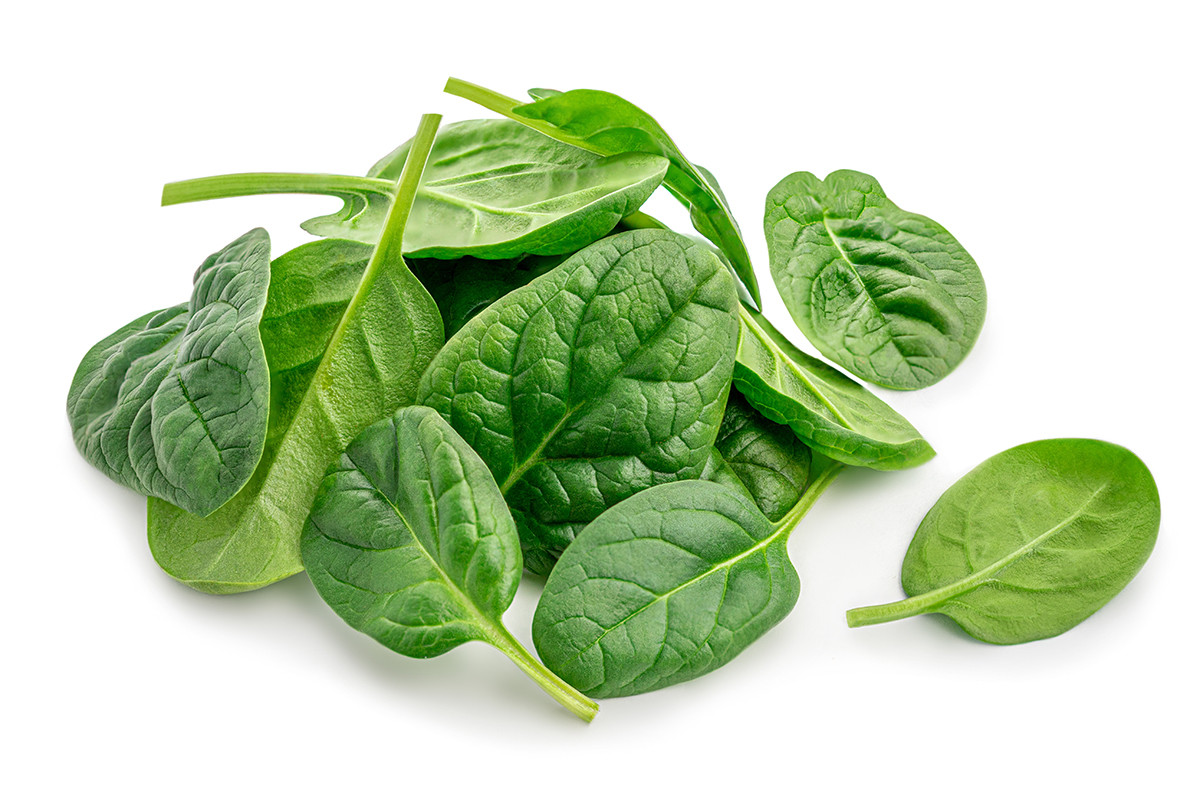Plasma-activated water for rinsing ready-to-eat baby-leaf spinach seen from a climate perspective.
Information about spinach from a climate and environmental perspective
Spinach is a product with a short shelf life and can be prone to high amounts of wastage. When food is wasted, it means that we apply increased pressure on nature in the form of land use and environmental emissions without getting anything out of it.
Therefore, it is important from a sustainability perspective to reduce food waste.
One way to reduce food waste is to increase shelf life so that the product stays fresh and edible for longer periods than is currently the case. Rinsing baby-leaf spinach in water is the traditional processing strategy that is used get rid of dirt, bacteria and pesticide residues.
As an alternative to the current washing process, iNOBox investigates whether it is possible to rinse the spinach using plasma-activated water to further reduce bacteria and bacterial growth. This may increase shelf life and thereby reduce food waste.
How to make an environmental assessment?
In order to carry out an environmental assessment of a certain foodstuff, background data is needed that provides information on how much energy and materials go through the entire value chain to produce the foodstuff. A so-called farm to fork life cycle analysis.
The required information includes the amount of fertilizer, cultivated area, harvested foodstuff, fuel for tractors and trucks, as well as consumption of other resources such as water, electricity, etc.
This is based on data from scientific literature.
In addition, it is important to include how much food is thrown away in each section of the value chain so that we can also calculate the environmental emissions associated with accumulated waste, from when it is harvested on a farm until it is eaten by you and me.
What is the current status of baby-leaf spinach?
Specific wastage figures for baby-leaf spinach vary widely between actors and over time. Due to the fact that some of the figures for a specific product such as baby-leaf spinach are confidential, we have relied here on general figures for fruit and vegetables.
These figures correspond well with similar values for baby-leaf spinach.
Today, fruit and vegetable wastage in stores is between 3-7% and approximately 8-10% for consumers. These are very uncertain and varying figures.
In addition, wastage occurs in relation to harvesting, washing and packing, as well as very low wastage figures in the wholesale section. In this study, wastage figures for fruit and vegetables have been chosen to represent spinach.
The findings from the study conducted by Vaka et al (2019) show that baby-leaf spinach washed with plasma-activated water has a greater reduction in bacteria, and delayed bacterial growth after rinsing.
This suggests that baby-leaf spinach receives a longer shelf life when plasma-activated water is used compared to regular rinsing in stores and by consumers. From an environmental perspective, increased shelf life for a foodstuff with such a short shelf life is a hint that waste is reduced.
However, it is important here to consider that plasma-activated water is an additional activity that will also require increased resources related to the production of baby-leaf spinach.
What we found out
The climate footprint for spinach with the background data we have and the wastage we have mapped is 1.13kg CO2-eq.
From an environmental perspective, the actual process associated with plasma-activated water contributes to a relatively small increase in the climate footprint of spinach (approximately +0.6%). Since there are currently no good methods for linking increased shelf life to an expected reduction in waste, we can only make assumptions about how the waste will change using plasma-activated water based on today’s waste.
Our analyses show that if plasma-activated water can reduce baby-leaf spinach wastage from 6% to 5% in stores and from 9% to 8% for consumers, then the reduction in food waste will compensate for the increased environmental impact associated with the actual use of plasma-activated water.
If plasma-activated water can reduce food waste in stores and households by 50%, we achieve a climate footprint of around 1.04kg-CO2 equivalents per kilogram of baby-leaf spinach, which is a -8% change in climate footprint.
If there was no wastage associated with baby-leaf spinach, the climate footprint would have been approximately 0.92kg CO2 equivalents. This means that 18.5% of today’s rinsed spinach climate footprint originates from food waste.
What did we actually find out?
Plasma-activated water is a new technological solution that helps increase the shelf life of food. As this is an additional activity to current processing, it must reduce environmental impacts related to food waste in order to produce a net positive climate footprint.
Seeing as plasma-activated water contributes small, additional direct emissions and also has the potential to provide baby-leaf spinach with a longer shelf life, it is likely that plasma-activated water used for rinsing baby-leaf spinach can also help to reduce the climate footprint.
| Title | Author(s) | Year | |
|---|---|---|---|
| Comparative life cycle assessment of plasma-based and traditional decontamination strategies on Norwegian ready-to-eat fresh spinach Conference proceeding in 12th International Conference on Life Cycle Assessment of Food 2020 | Saxegård, Simon Alexander; Møller, Hanne; Valente, Clara; Svanes, Erik; Noriega, Estefania | 2020 | Go to publication |

